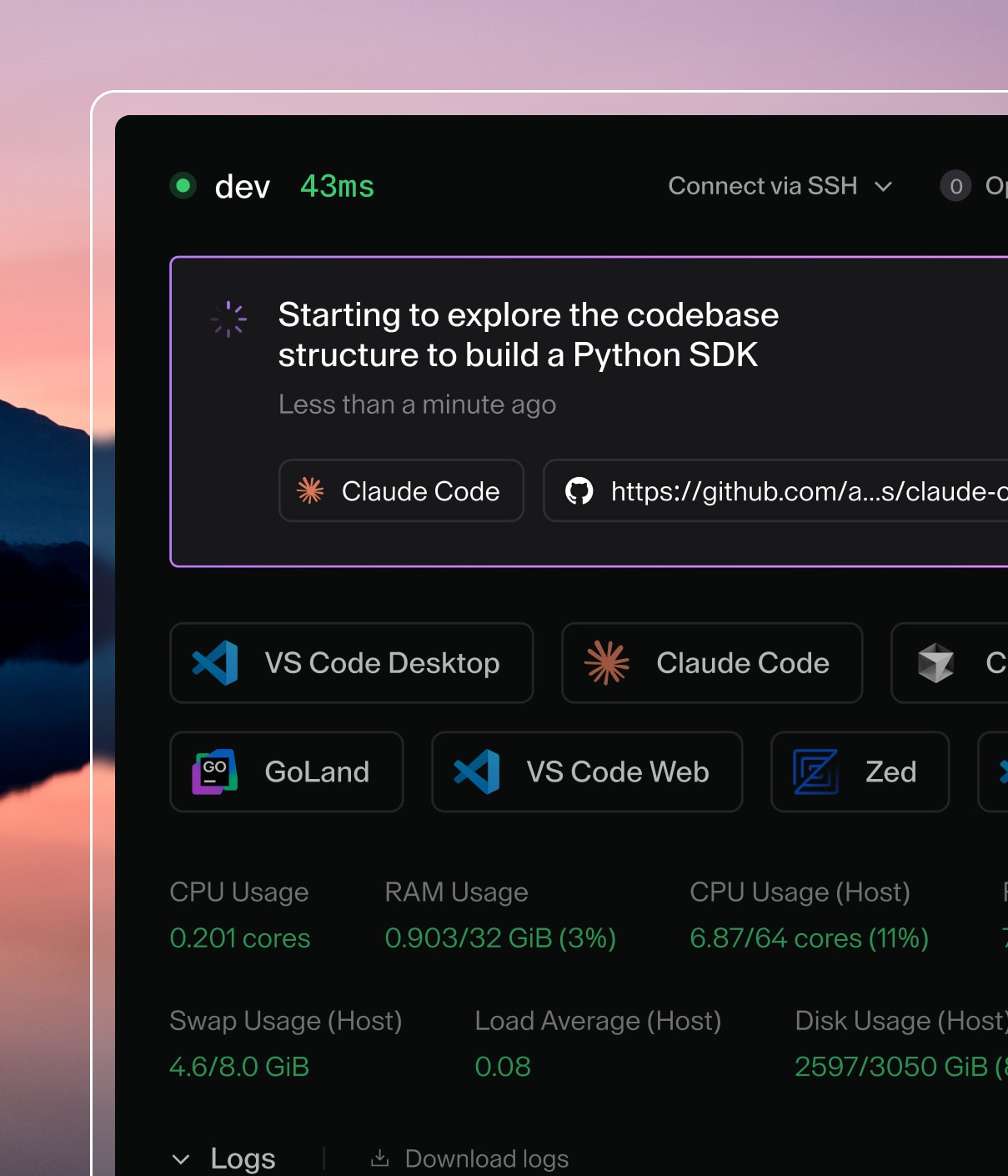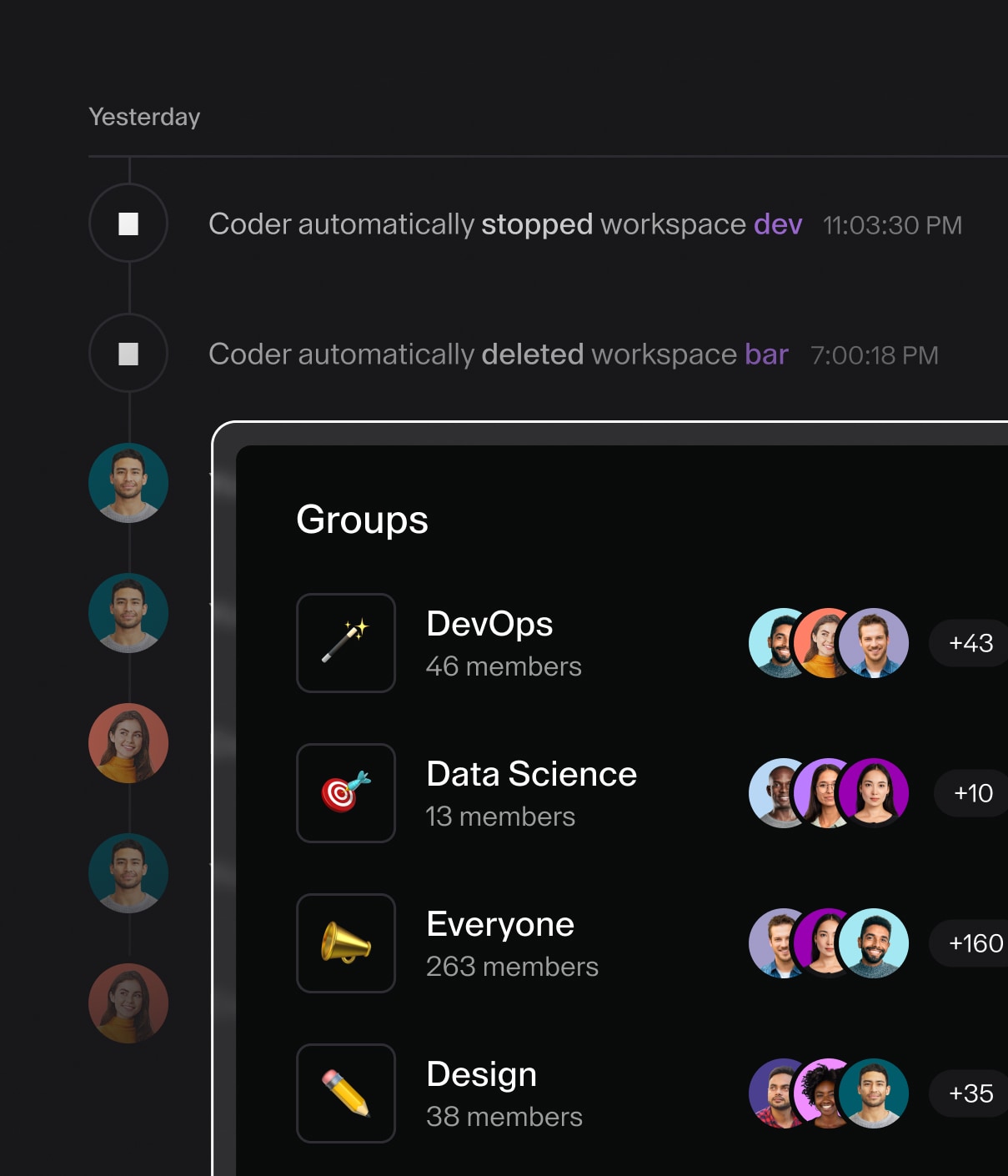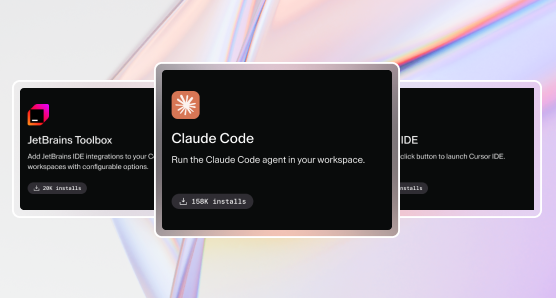Coder Desktop
Coder Desktop provides seamless access to your remote workspaces through a native application. Connect to workspace services using simple hostnames like myworkspace.coder, launch applications with one click, and synchronize files between local and remote environments—all without installing a CLI or configuring manual port forwarding.
What You'll Need
- A Coder deployment running
v2.20.0or later - Administrator privileges on your local machine (for VPN extension installation)
- Access to your Coder deployment URL
Quick Start
- Install:
brew install --cask coder/coder/coder-desktop(macOS) orwinget install Coder.CoderDesktop(Windows) - Open Coder Desktop and approve any system prompts to complete the installation.
- Sign in with your deployment URL and session token
- Enable "Coder Connect" toggle
- Access workspaces at
workspace-name.coder
How It Works
Coder Connect, the primary component of Coder Desktop, creates a secure tunnel to your Coder deployment, allowing you to:
- Access workspaces directly: Connect via
workspace-name.coderhostnames - Use any application: SSH clients, browsers, IDEs work seamlessly
- Sync files: Bidirectional sync between local and remote directories
- Work offline: Edit files locally, sync when reconnected
The VPN extension routes only Coder traffic—your other internet activity remains unchanged.
Installation
brew install --cask coder/coder/coder-desktop
Coder Desktop requires VPN extension permissions:
- When prompted with "Coder Desktop" would like to use a new network extension, select Open System Settings
- In Network Extensions settings, enable the Coder Desktop extension
- You may need to enter your password to authorize the extension
✅ Verify Installation: Coder Desktop should appear in your menu bar
Testing Your Connection
Once connected, test access to your workspaces:
ssh your-workspace.coder
Troubleshooting
Connection Issues
Can't connect to workspace
- Verify Coder Connect is enabled (toggle should be ON)
- Check that your deployment URL is correct
- Ensure your session token hasn't expired
- Try disconnecting and reconnecting Coder Connect
VPN extension not working
- Restart Coder Desktop
- Check system permissions for network extensions
- Ensure only one copy of Coder Desktop is installed
Getting Help
If you encounter issues not covered here:
Uninstalling
- Disable Coder Connect in the app menu
- Quit Coder Desktop completely
- Remove VPN extension from System Settings > Network Extensions
- Delete the app from Applications folder
- Remove configuration (optional):
rm -rf ~/Library/Application\ Support/Coder\ Desktop


